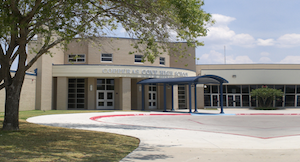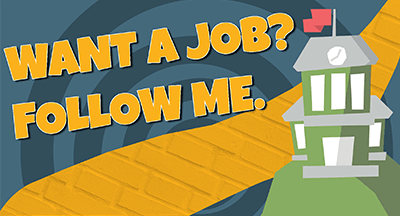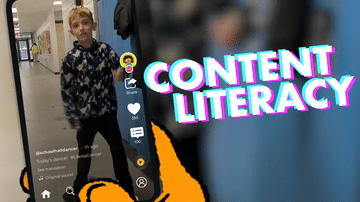
There is no greater force for changing the world than a powerful idea.
That’s the vision of the Sapling Foundation, the nonprofit organization behind the wildly popular TED talks. So what is TED? And how can TED talks help you as a K-12 leader? Let’s start at the very beginning, with a definition and some history, to find out.
No time for a history lesson? Skip ahead to “TED for Educators” to learn how TED can benefit your district, teachers, and students.
The Power of 18 Minutes
TED is a conference (now a series of conferences and online talks, but we’ll get to that later) intended to “[spread] ideas, usually in the form of short, powerful talks (18 minutes or less).”The first TED conference was the brainchild of Richard Saul Wurman, an architect and graphic designer. He noted the convergence of the technology, entertainment, and design (TED) fields and decided to host an event at which speakers would present on those topics. You can still see the very first talk, a presentation on technology given in 1984, here!
The first conference was no grand slam. It left Wurman and his partner in the red. The second event wasn’t held until six years later, but it’s safe to say a rocky start did not predict what was to come. Since the inaugural pursuit, TED conferences have grown exponentially. TED now sells out every year, and conference-goers pay an annual membership fee of $8,500 to attend. As a nonprofit, TED promises “every dime we make goes right back into supporting our work.”
Throughout the course of the annual conference, more than 70 speakers present their ideas to a live audience. Presentations are given in a variety of languages, and topics are no longer restricted to technology, entertainment, and design. Today’s presenters include religious leaders, scientists, comedians, musicians, and professional athletes, among others. They have included the likes of Jane Goodall, Bill Clinton, Stephen Hawking, Billy Graham, Sting, Bono, Bill Gates, and Chris Kluwe.
When the annual conference (now held each year in Vancouver, Canada) became a success, TED continued to expand its reach. The nonprofit now hosts a number of conferences and endeavors including, but not limited to:
- TEDGlobal: An international conference held at varying locations throughout the world.
- TED Prize: The winner receives one million dollars to help grant his or her wish to “change the world.” You can read about 2015 recipient, and StoryCorps founder, Dave Isay here. The StoryCorps app, developed with prize money, is now used in classrooms to teach history, interviewing methods, and the value of listening.
- TEDActive: An event that live streams the Vancouver conference. The emphasis of this gathering is on “connection, conversation, and creation.” It’s also a conference for the more budget-conscious crowd, at $4,250 per person.
TED didn’t stop with the conferences. The TED team wanted to share the innovative ideas of speakers with as many people as possible. After all, that is how they’d help these thinkers change the world. TED turned to the media with the hopes of airing a TV show featuring some of the best lectures. When no networks had interest in running the series, it was time for Plan B: the Internet. TED began posting talks on YouTube and iTunes. It is this “Plan B” that turned TED into the sensation it is today.
TED.com – “Ideas Worth Sharing”
Today there are over 2,000 TED talks available on TED.com, released in both audio and video podcast series. The most important factor for viewers and the key to TED’s widespread popularity? These talks are absolutely free.
TED for Educators: "Lessons Worth Sharing"
Since TED is focused on sharing ideas and changing the world, naturally the nonprofit has an interest in education. The TED team created a resource, TED-Ed, specifically for the education community. The goal of this website is to “amplify the voices and ideas of teachers and students.”There are two types of learning tools on this site. The first is a collection of videos created by a team of teachers and animators. These videos cover a wide variety of topics that both teachers and students can learn from. The second tool, a lesson tool, allows educators to build a lesson around a TED-Ed animation, a TED talk from another category, or a YouTube video of choice. Teachers begin by selecting a video, then adding questions, notes, and resources to turn the video into a classroom lesson. (Only individuals with a link to the created lesson can view it.)
5 Must-See TED Talks on Education
In addition to the videos posted and created on TED-Ed, education professionals can find a variety of beneficial videos on TED’s main site, TED.com. To give you a taste of what you can find, we've pulled together five can’t-miss TED talks on education. It's amazing what you can learn in just 18 minutes.Are you passionate about a topic or presentation that was not included? Let us know in the comments below. For more on how Skyward can help your district become a leading voice in the education conversation, contact us today.
WHAT'S NEXT FOR YOUR EDTECH? The right combo of tools & support retains staff and serves students better. We'd love to help. Visit skyward.com/get-started to learn more.

|
Lauren Gilchrist Blogger, Traveler, and Video Talent |
Lauren enjoys visiting school districts and spreading the word about creative, non-traditional approaches to universal challenges. Follow her for on-the-scene education journalism (with a little fun sprinkled in).




